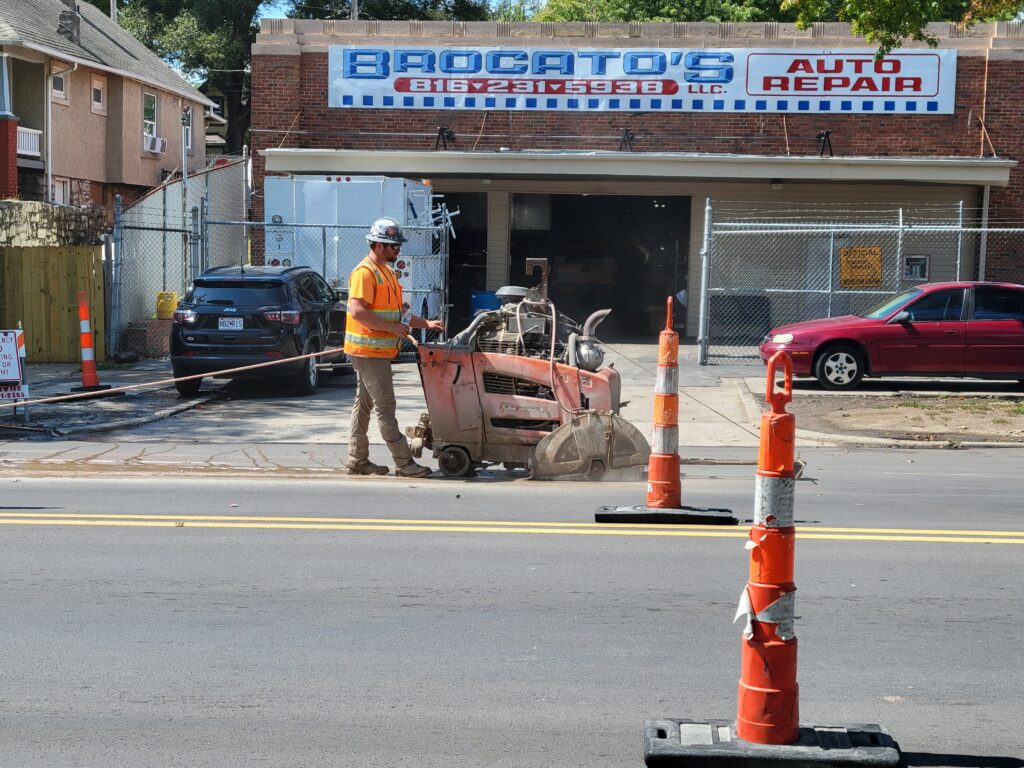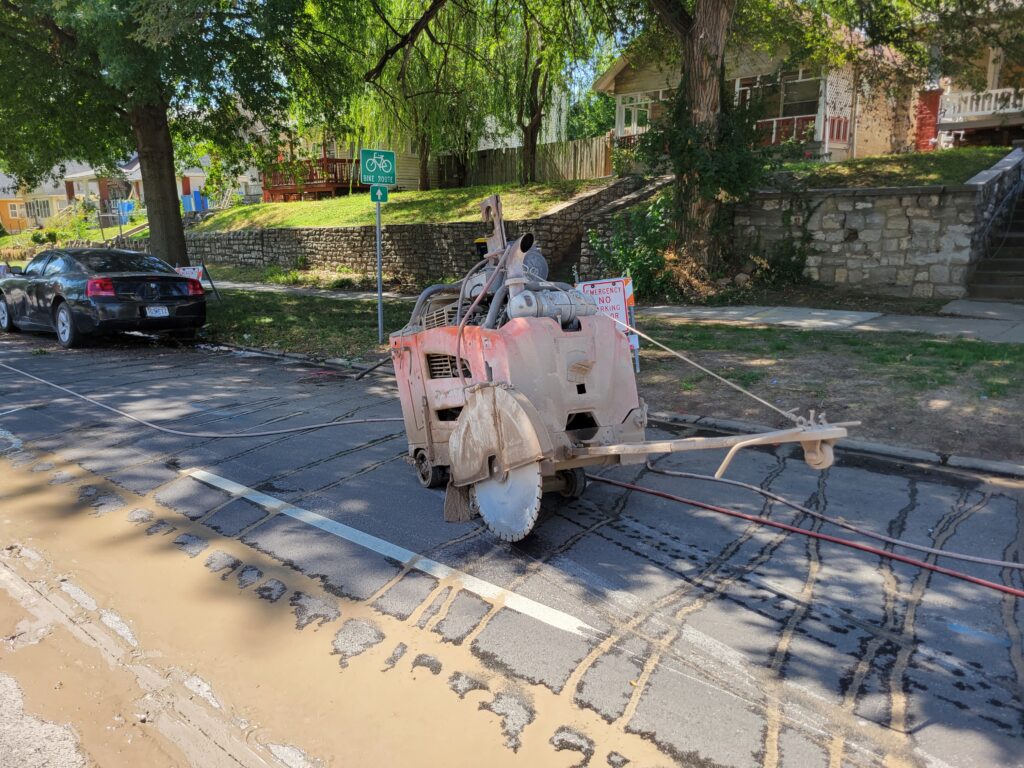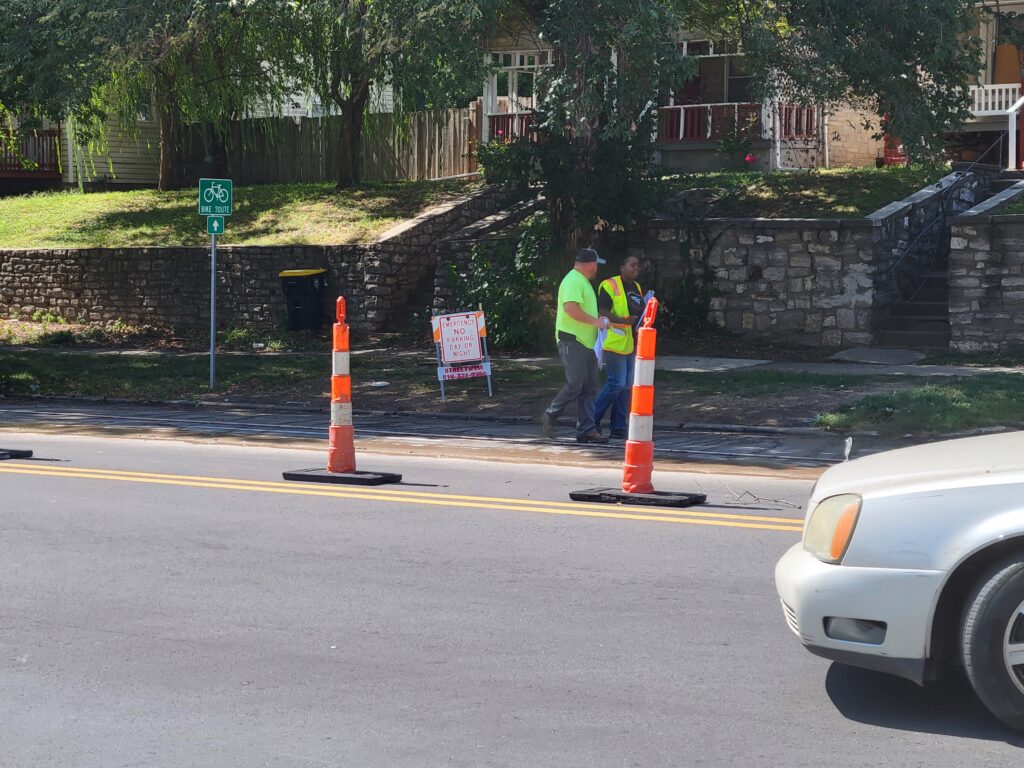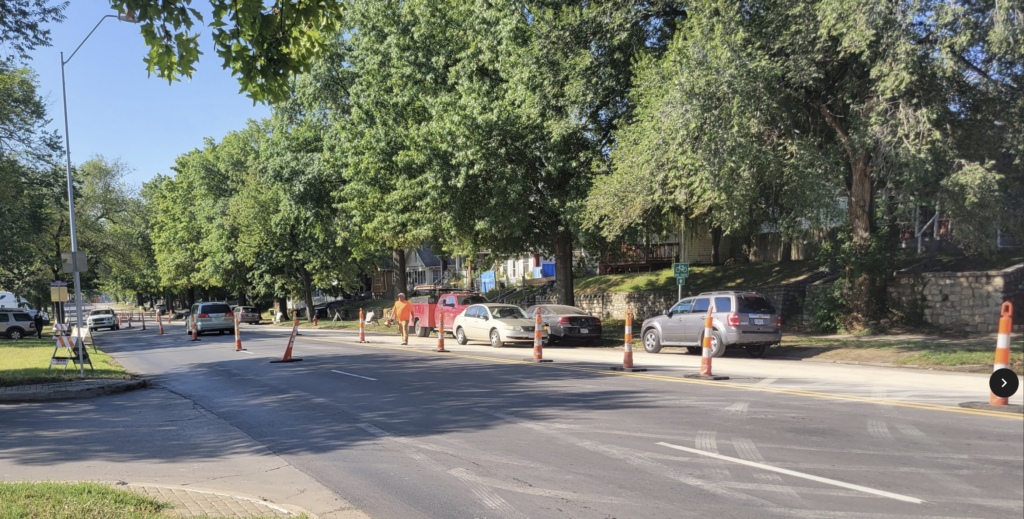
Michael Bushnell
Publisher
Maybe not so much. If you’ve been unlucky enough to drive down Belmont Blvd. this week, just south of St. John Avenue, you’ve had to navigate around a fresh new set of orange cones due to construction subcontractors tearing up brand new pavement. When we say brand new pavement, we mean, less than six weeks old. The glue is barely dry on the lane striping, that’s how new this pavement is.
We asked the cutting contractor what subcontractor was following behind him, thinking it might be our old buddies at Mears or Miller Pipeline, subcontracting for Spire Energy. We’ve editorialized on those contractors before, given their propensity to leave open holes and substandard pavement surfaces in their wake.
But no, not this time. This time it’s the City’s own Water Department that’s destroying that gorgeously smooth, brand new, City-laid pavement. Obviously, the right hand doesn’t know what the left hand is doing.


Anyone else remember the ballyhoo made back in 2021 when the Mayor got fed up with utility contractors coming in right behind paving contractors and tearing the daylights out of brand new pavement in the name of progress? Anyone who’s driven Wornall Road in the last five years knows it still looks like France after the Great War.
In a release on the City’s web site on August 19, 2021, the Mayor states: “Too often, the City spends time, resources, and manpower on resurfacing a street in our city, only to have that same street torn up days later for pre-scheduled utility work. It’s frustrating. It’s wasteful. It’s expensive.”

City Manager Brian Platt went on to say: “This new policy will improve coordination and create a higher level of accountability over our utility companies that will lead to smoother streets and more efficient maintenance of our infrastructure.”
The NewsDog wonders if maybe those messages got lost in translation over at the Water Department.
Specifically, that new City policy requires:
- A full lane width repair of a pavement cut for pavements 5 years and older
- Improved backfilling material underneath the patch
- Full street repaving if more than 20% of the street is going to be patched
- Temporary street plates must be embedded in the pavement in all seasons, not just placed on top of the street
- Combining patches that are 10 feet apart into one larger patch
Maybe the Mayor and the City Manager can take some time to have lunch with those folks down at the Water Department and give them a rundown on the now two-year-old City policy and show them how to use job scheduling software.

We all remember a few years back when the City, at this same intersection, installed new ADA compliant corner sidewalk ramps a total of three times over a two month period for no apparent reason. Now the City is back at the same intersection tearing up six-week-old pavement for a City Water Department project.
You can’t make this stuff up, folks. You know what they say, they’re from the government and they’re here to help. This keen-eyed News Dog will be keeping an eye on the project to make sure that the City’s Water Department follows the new ordinance to the letter in restoring the street surface. We’re doubting it, given they obviously didn’t get the scheduling memo on the new pavement.


















